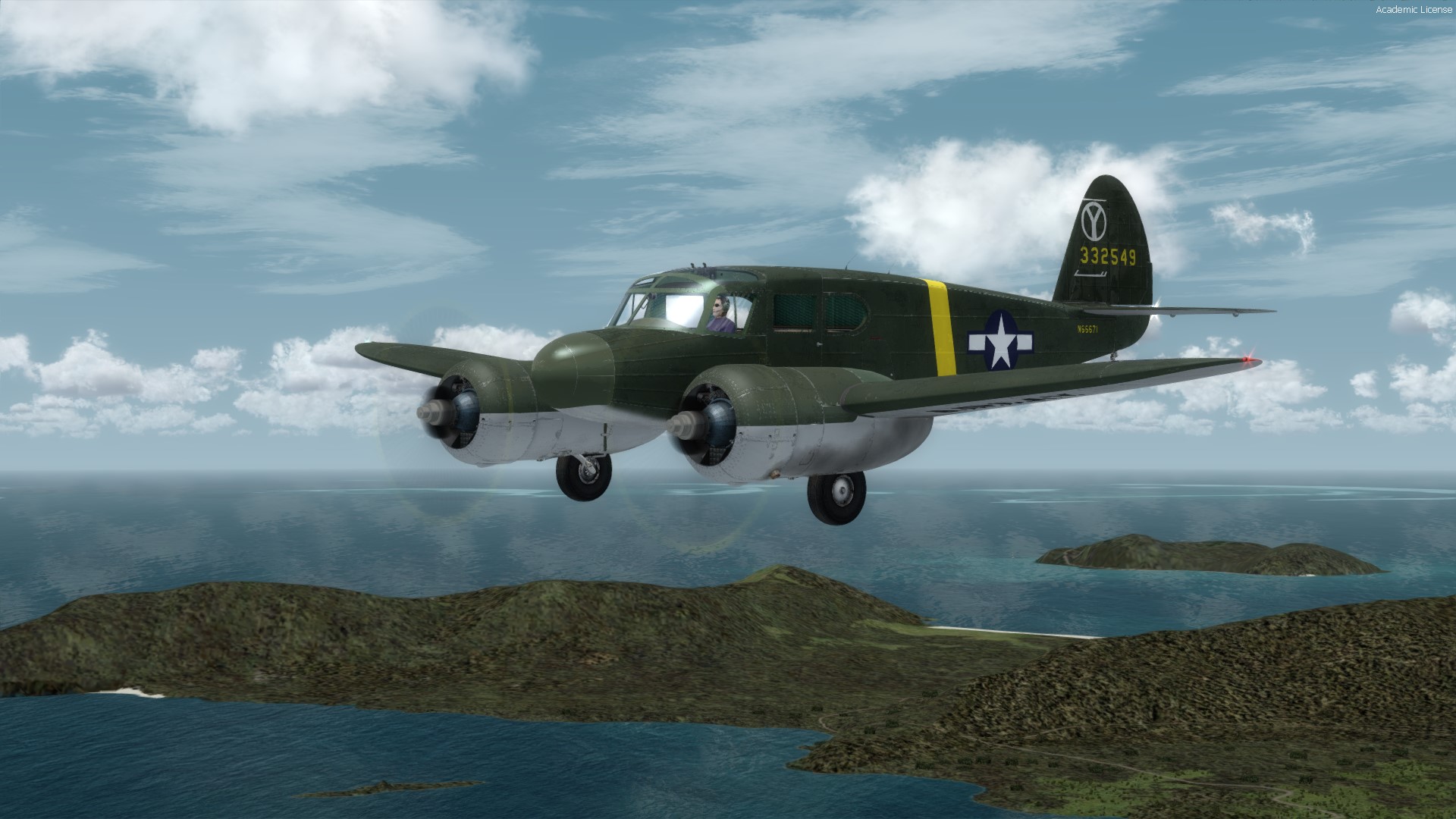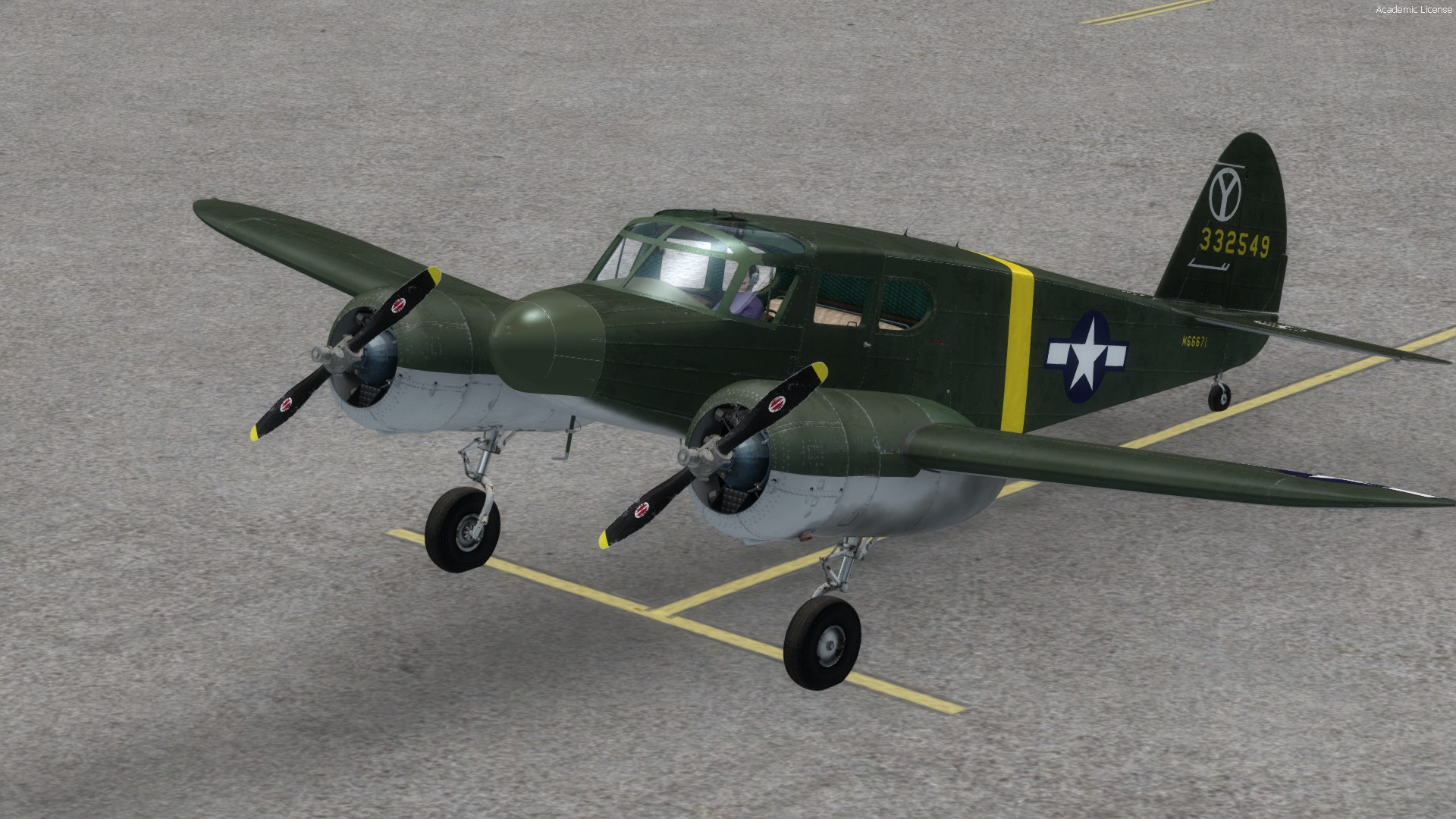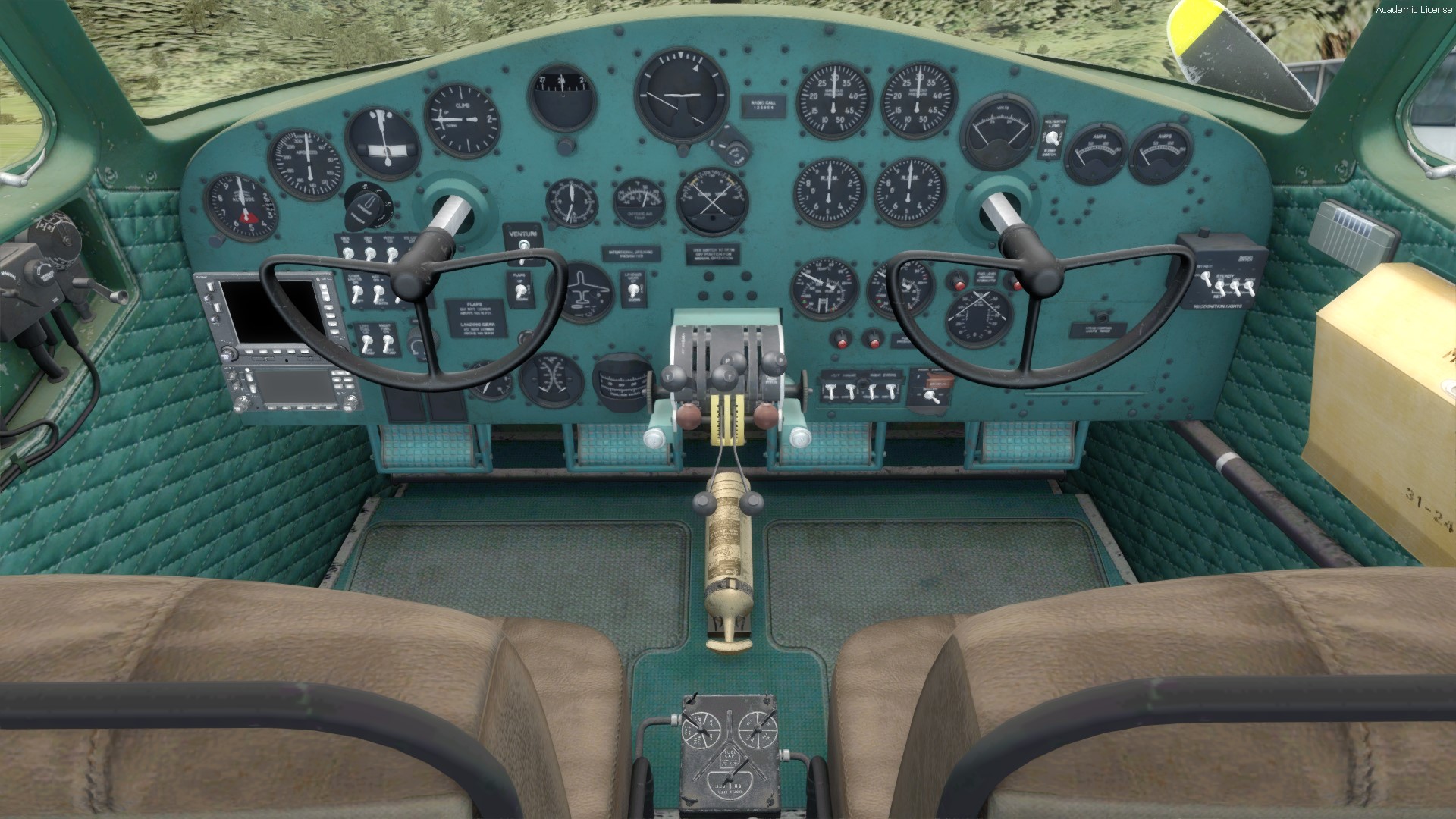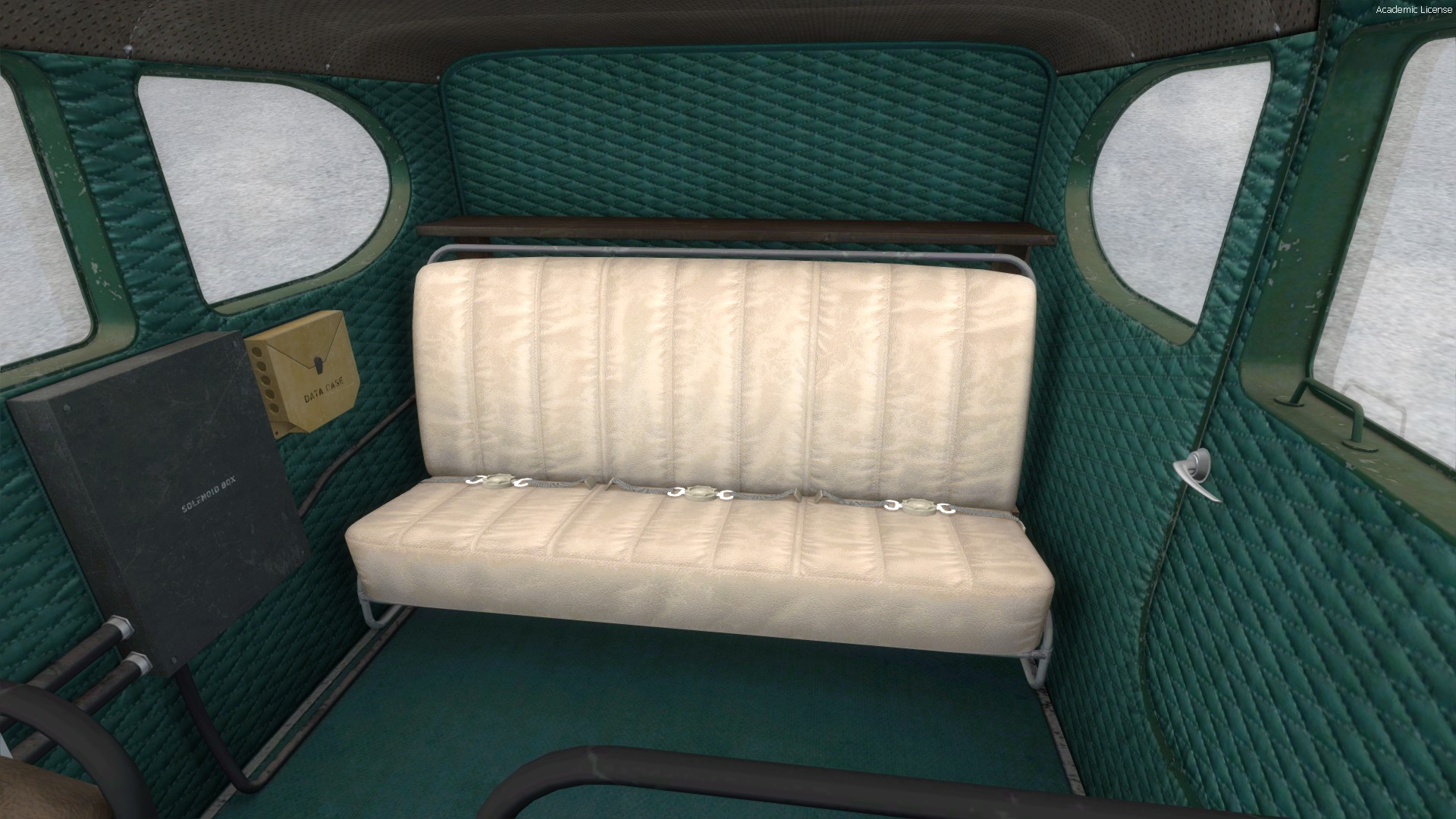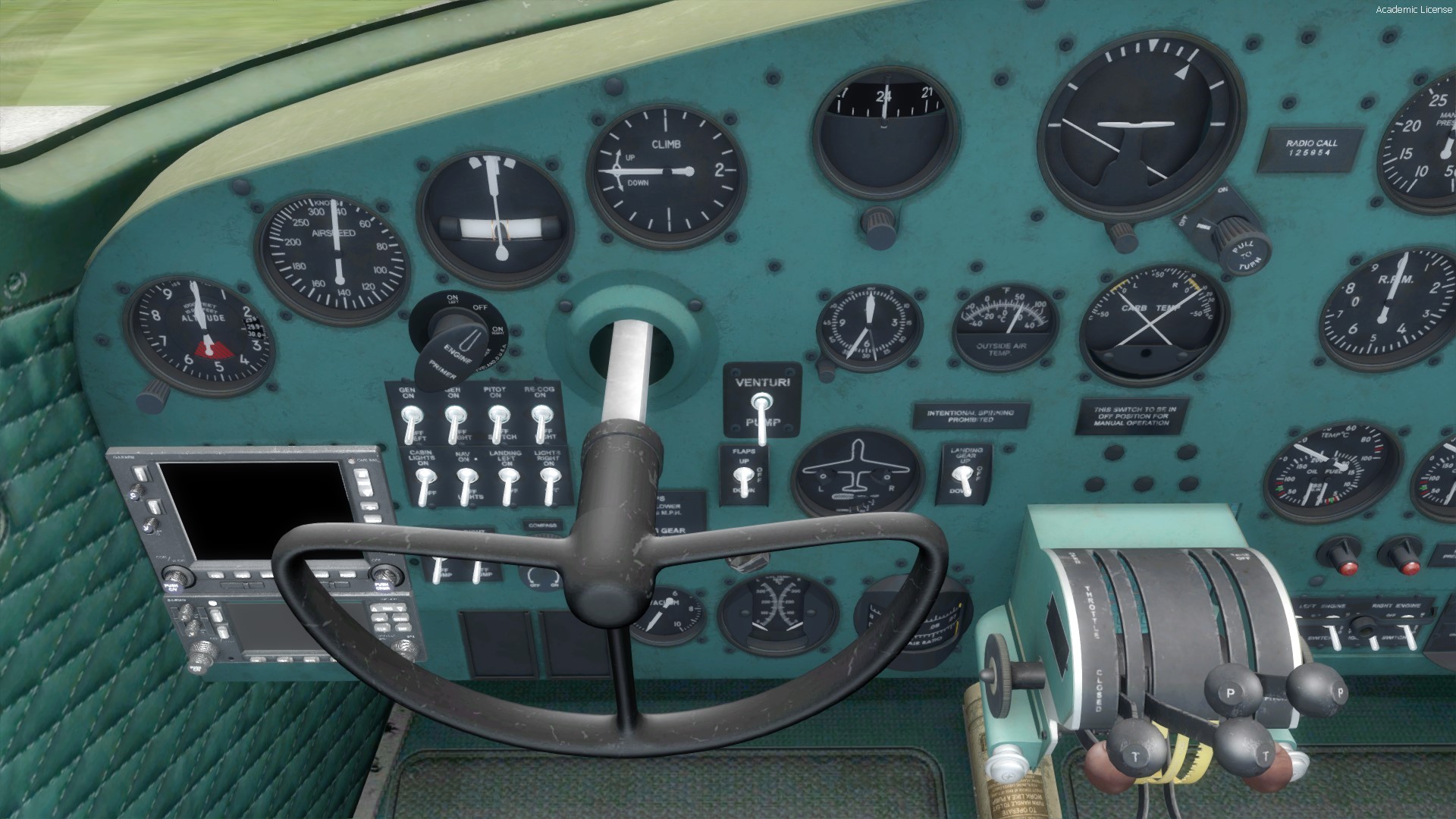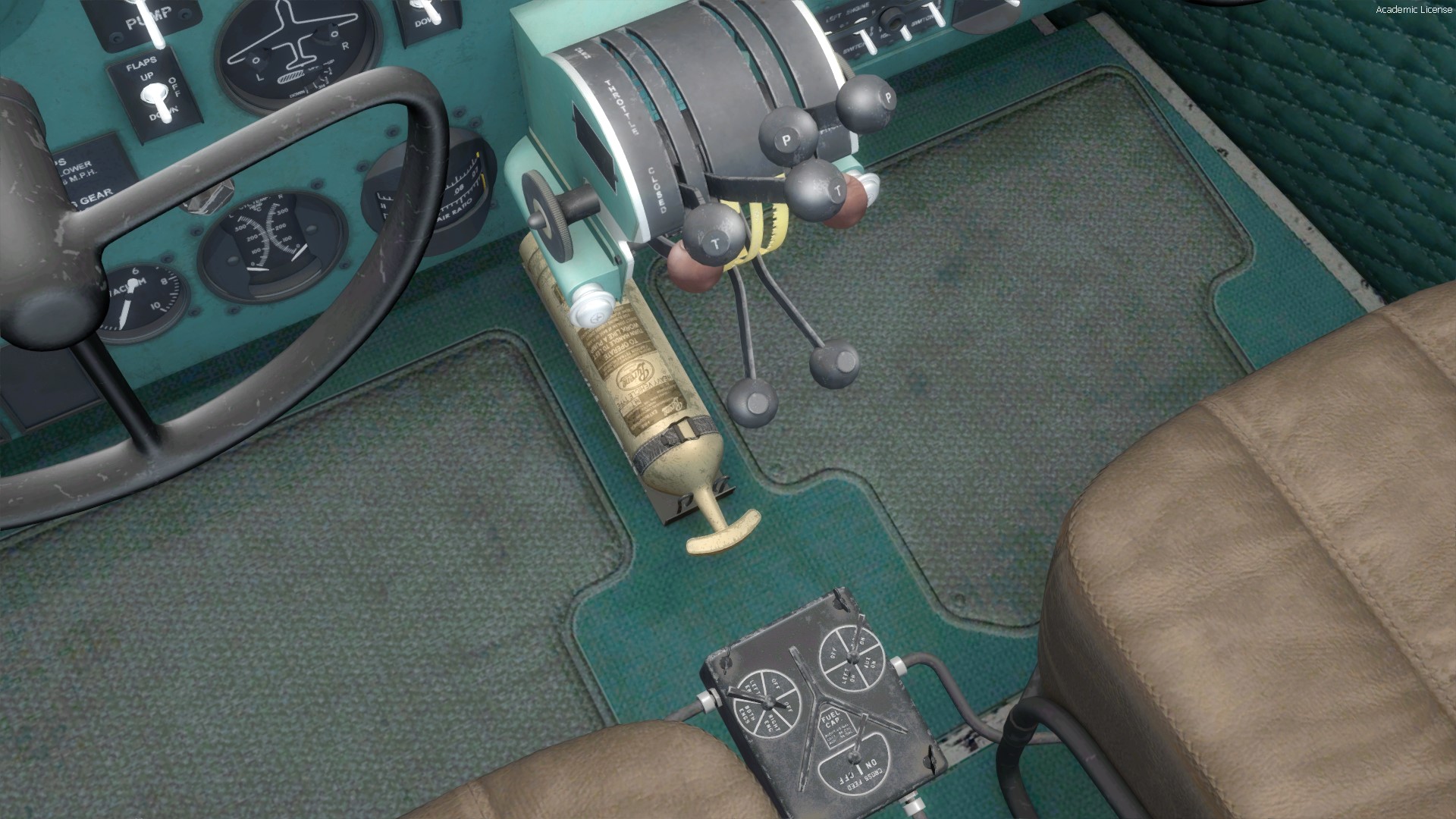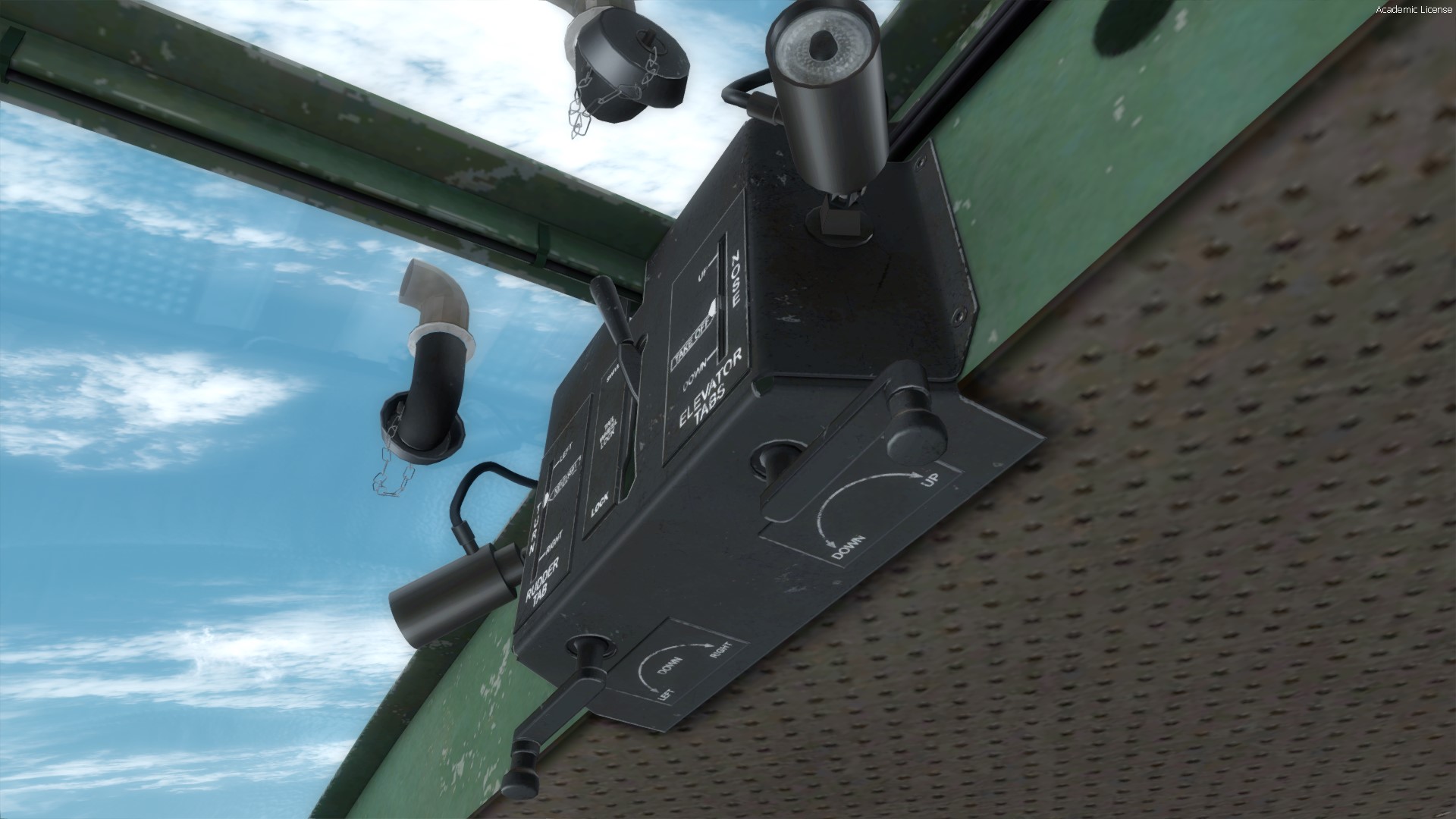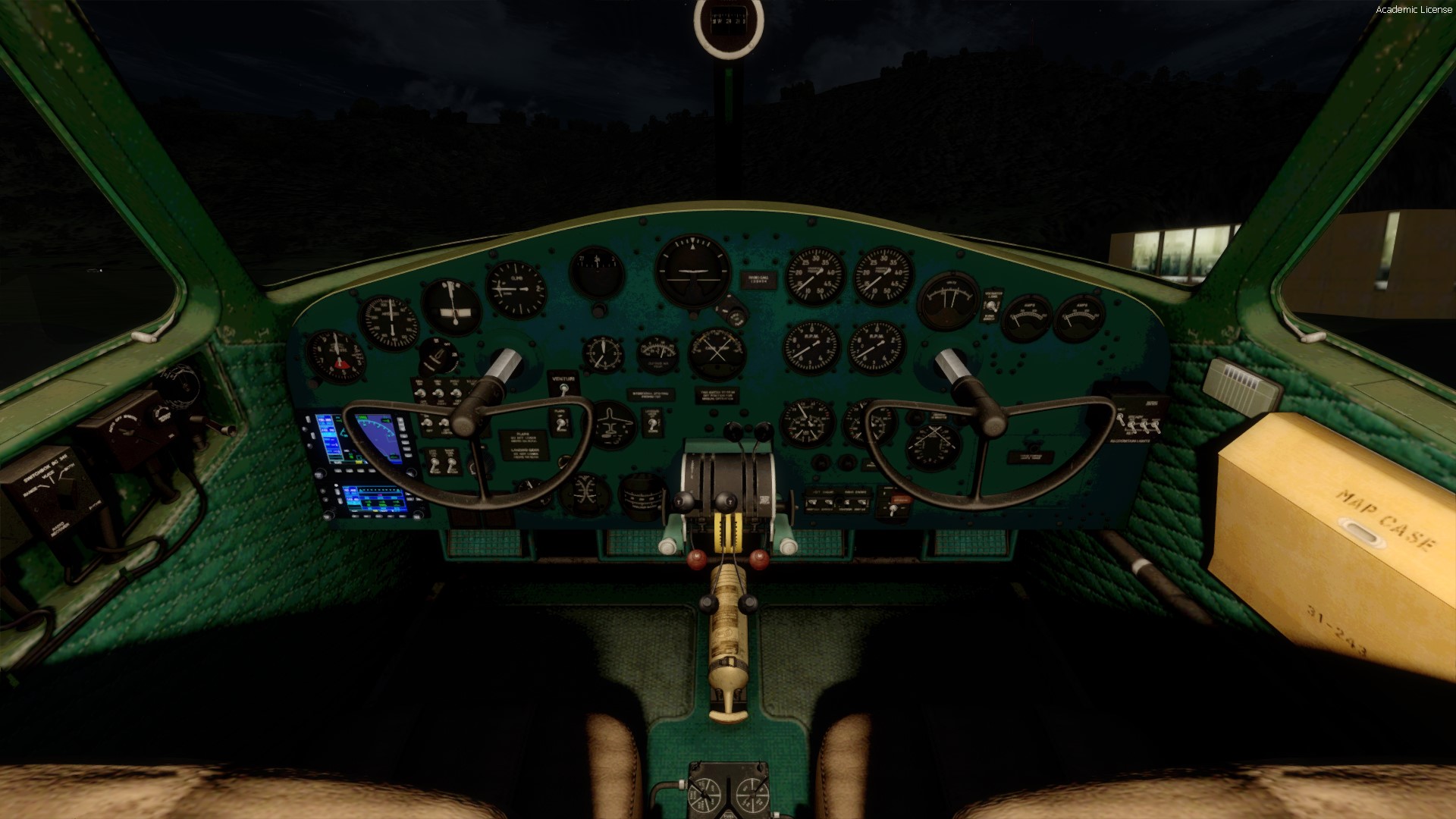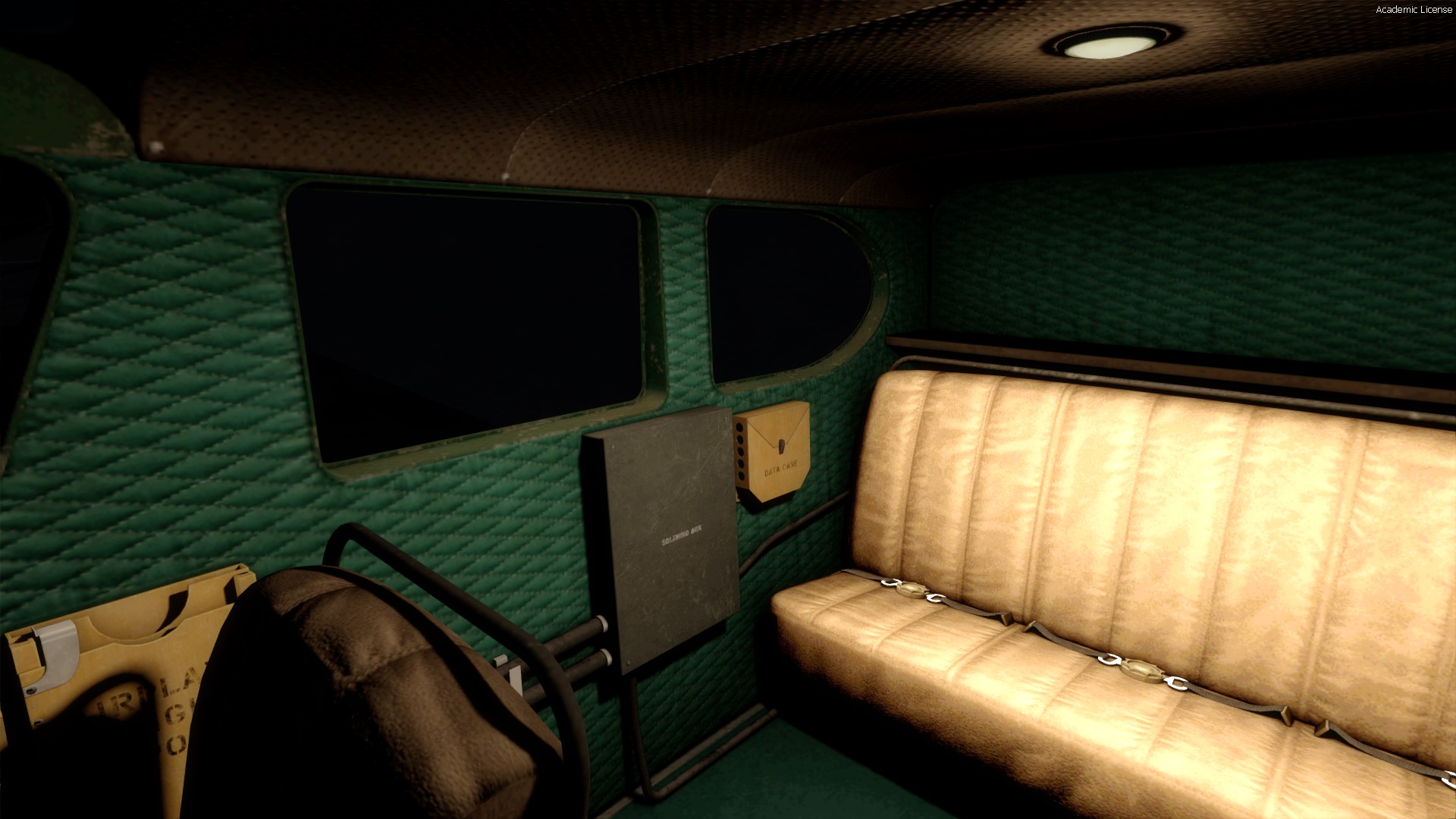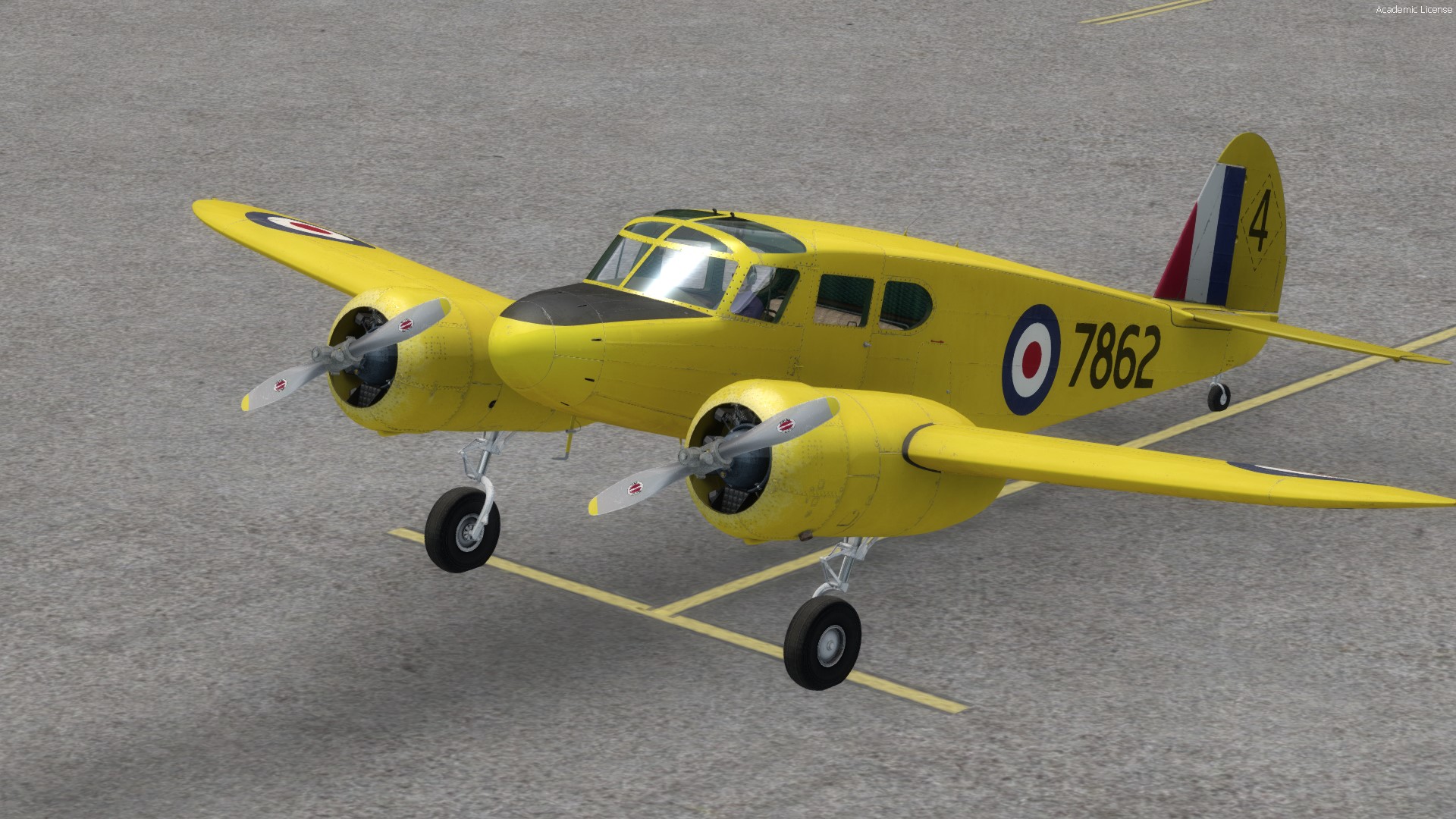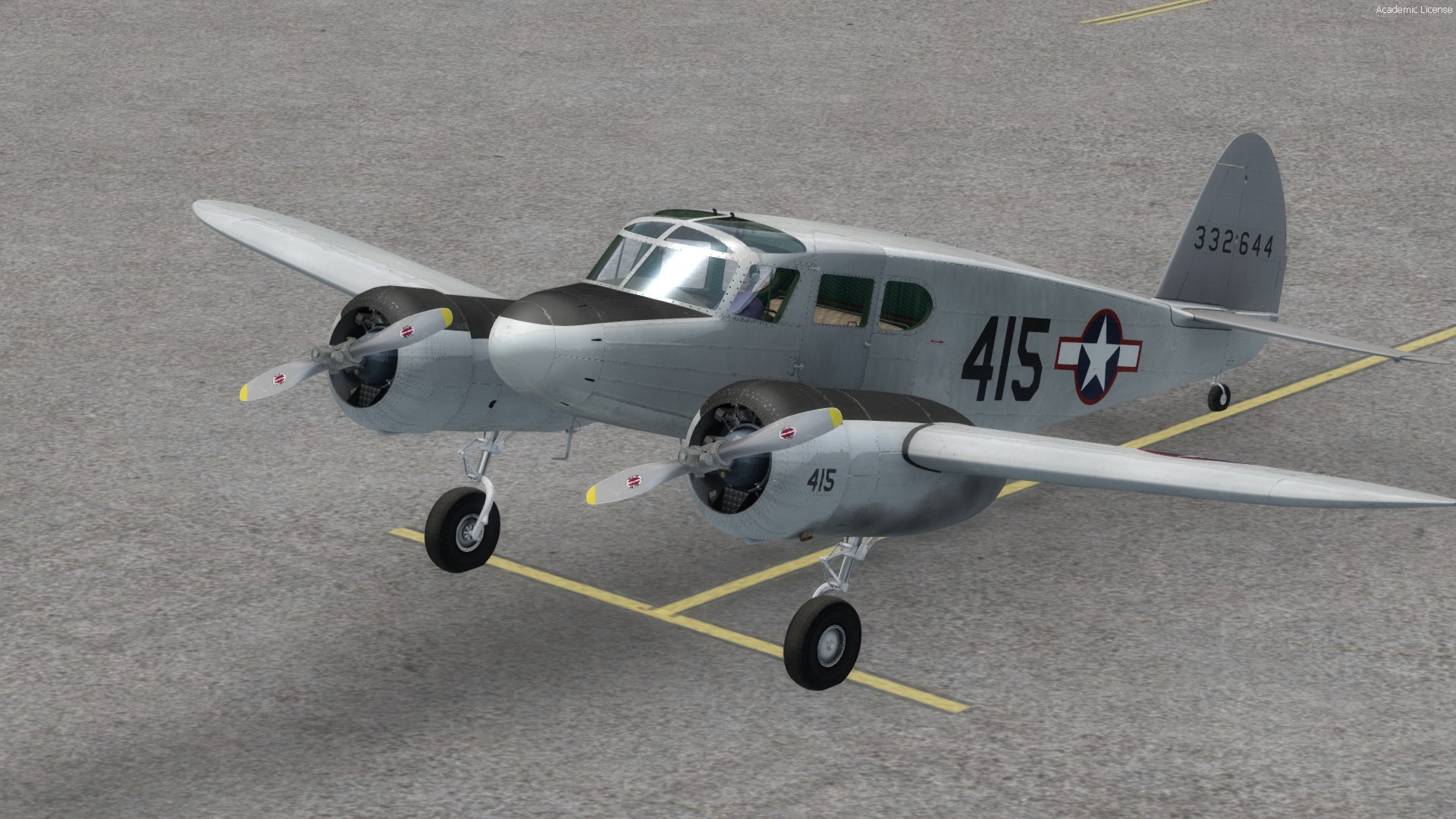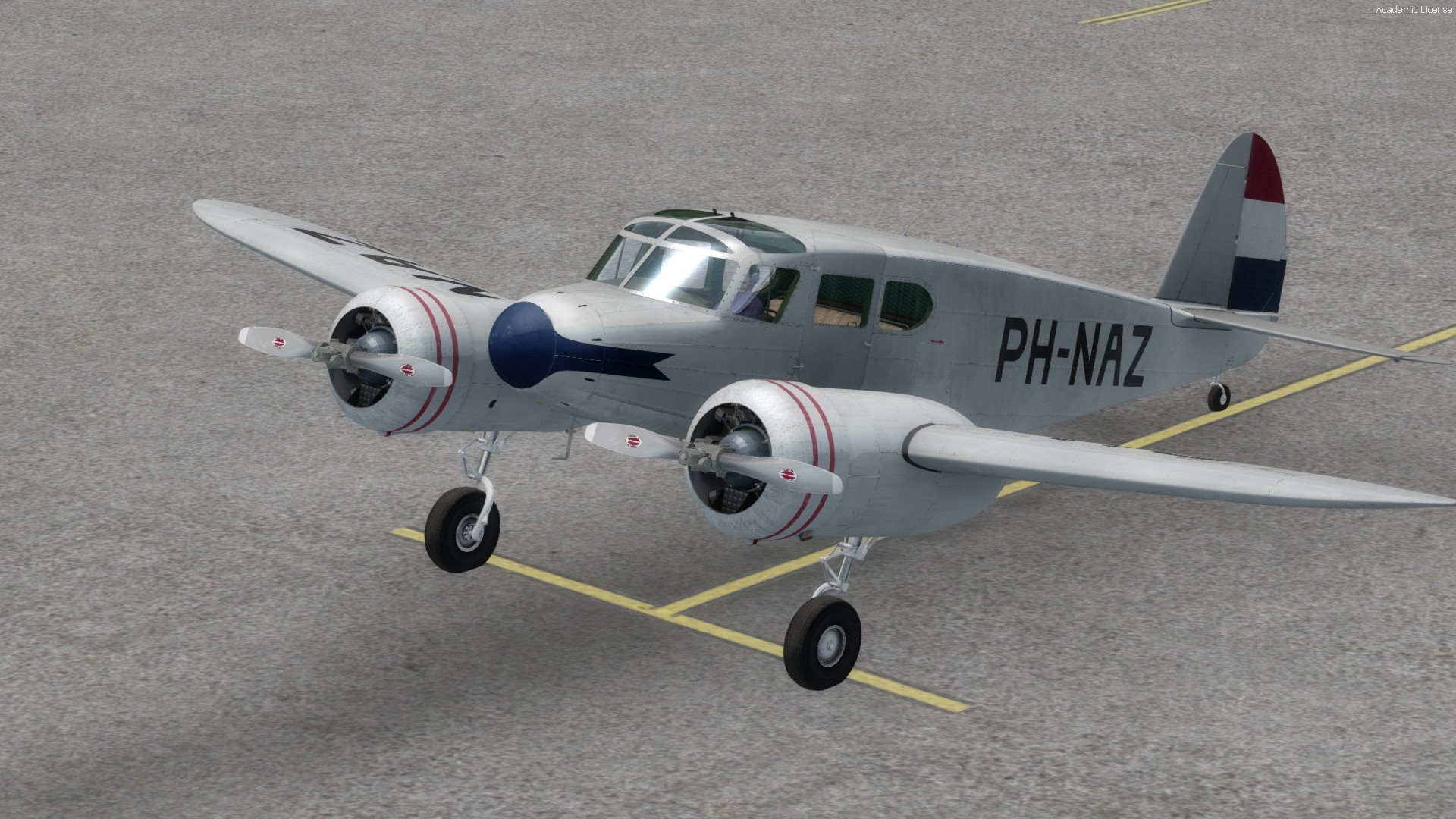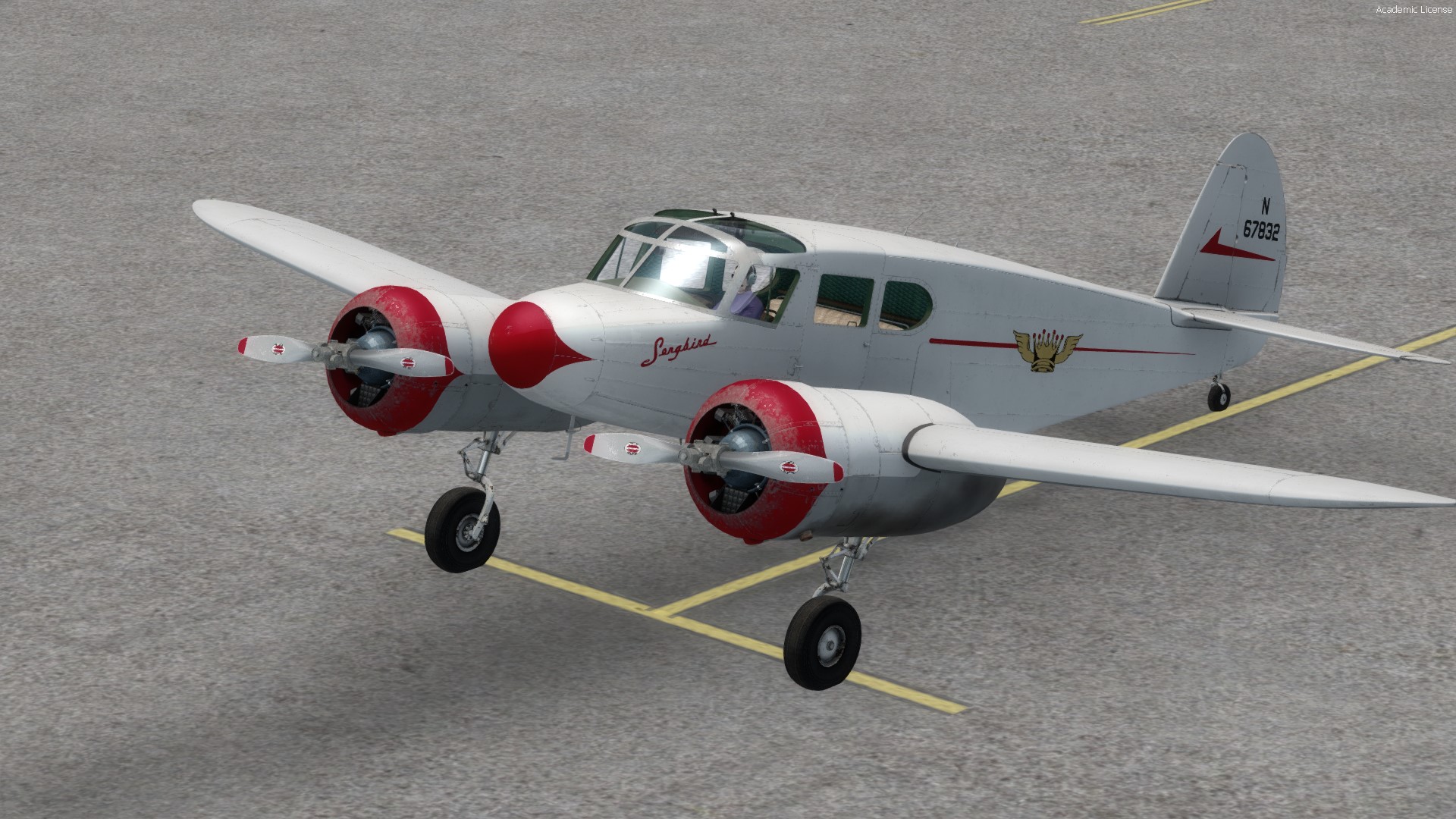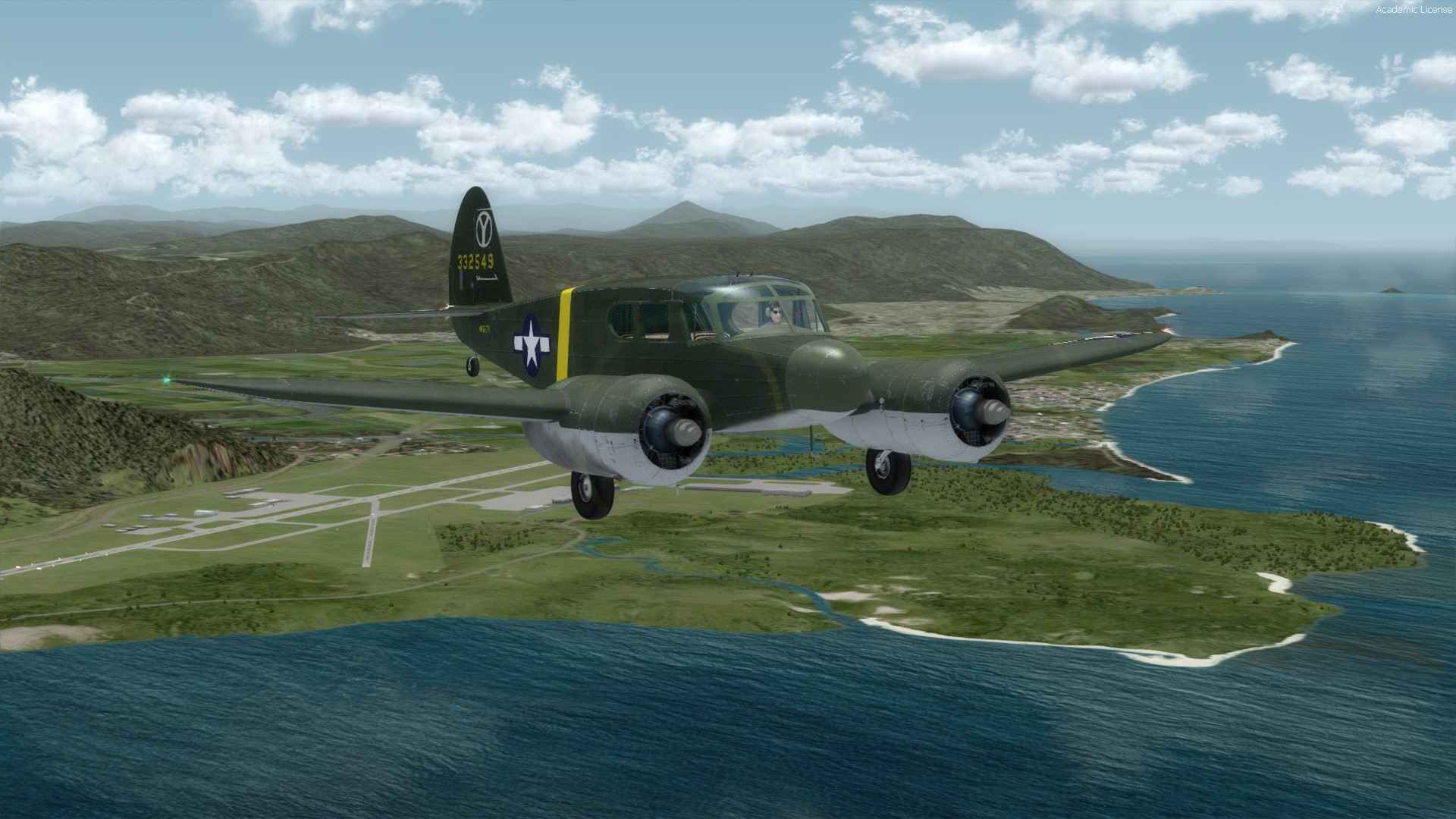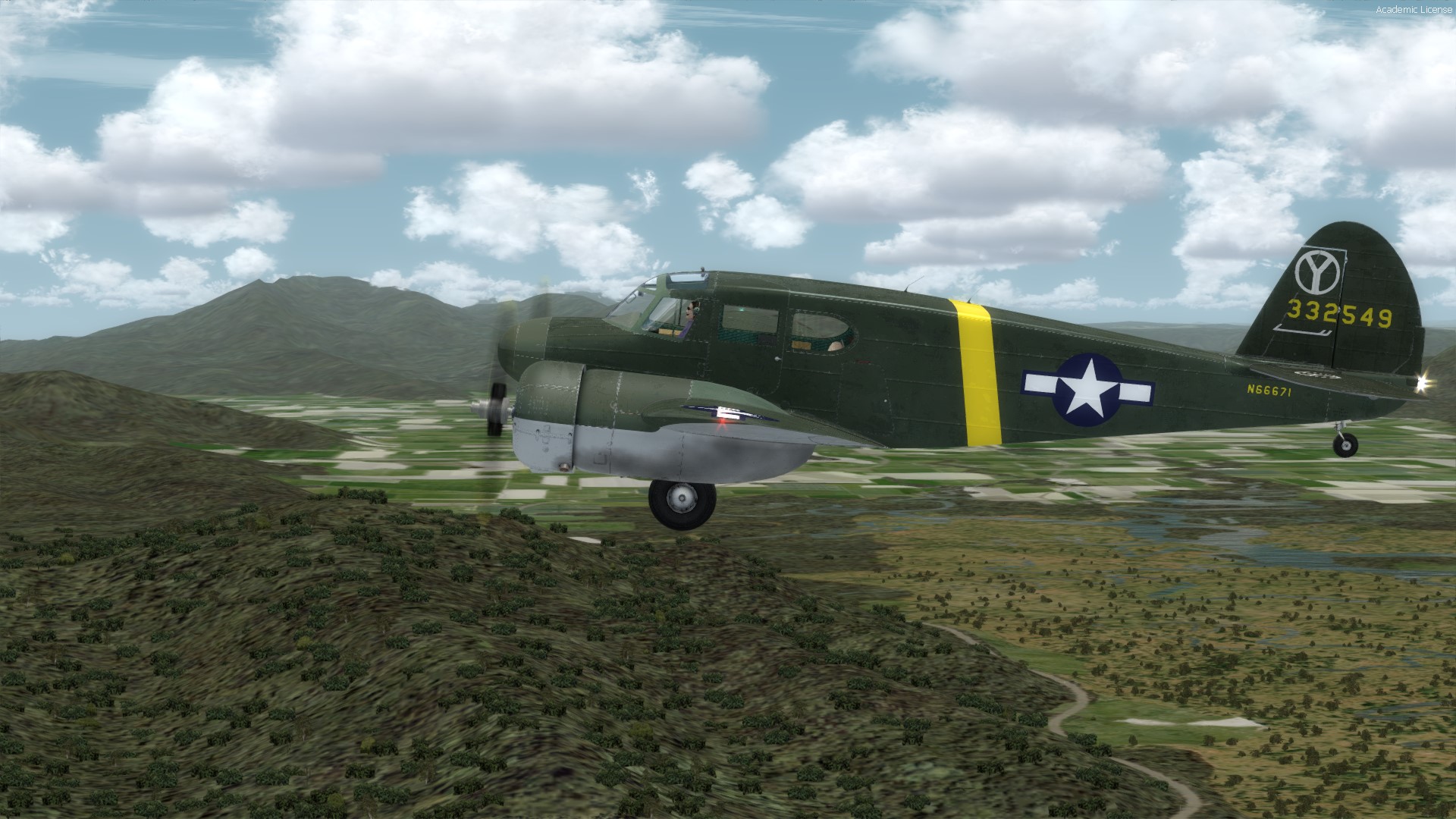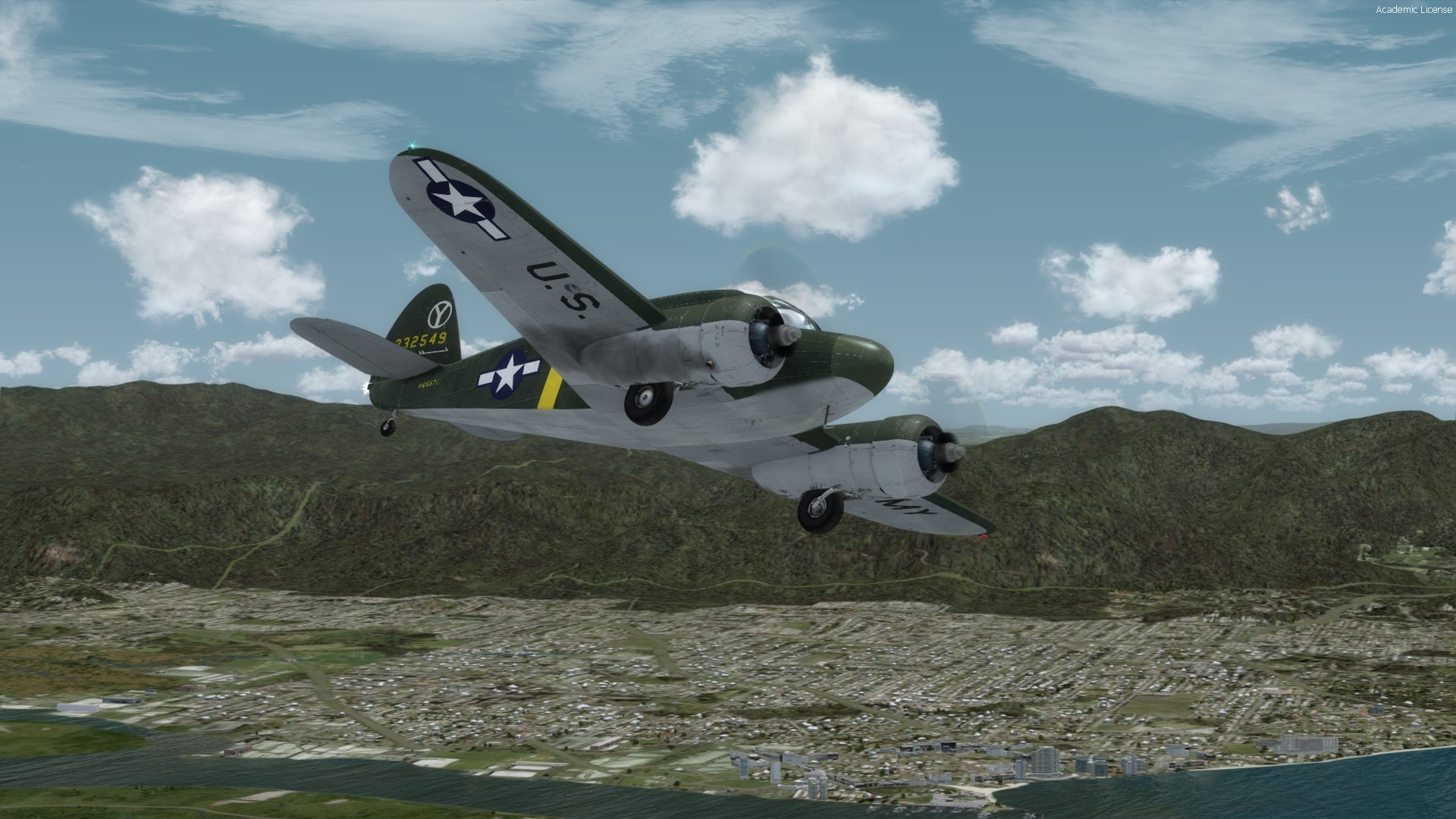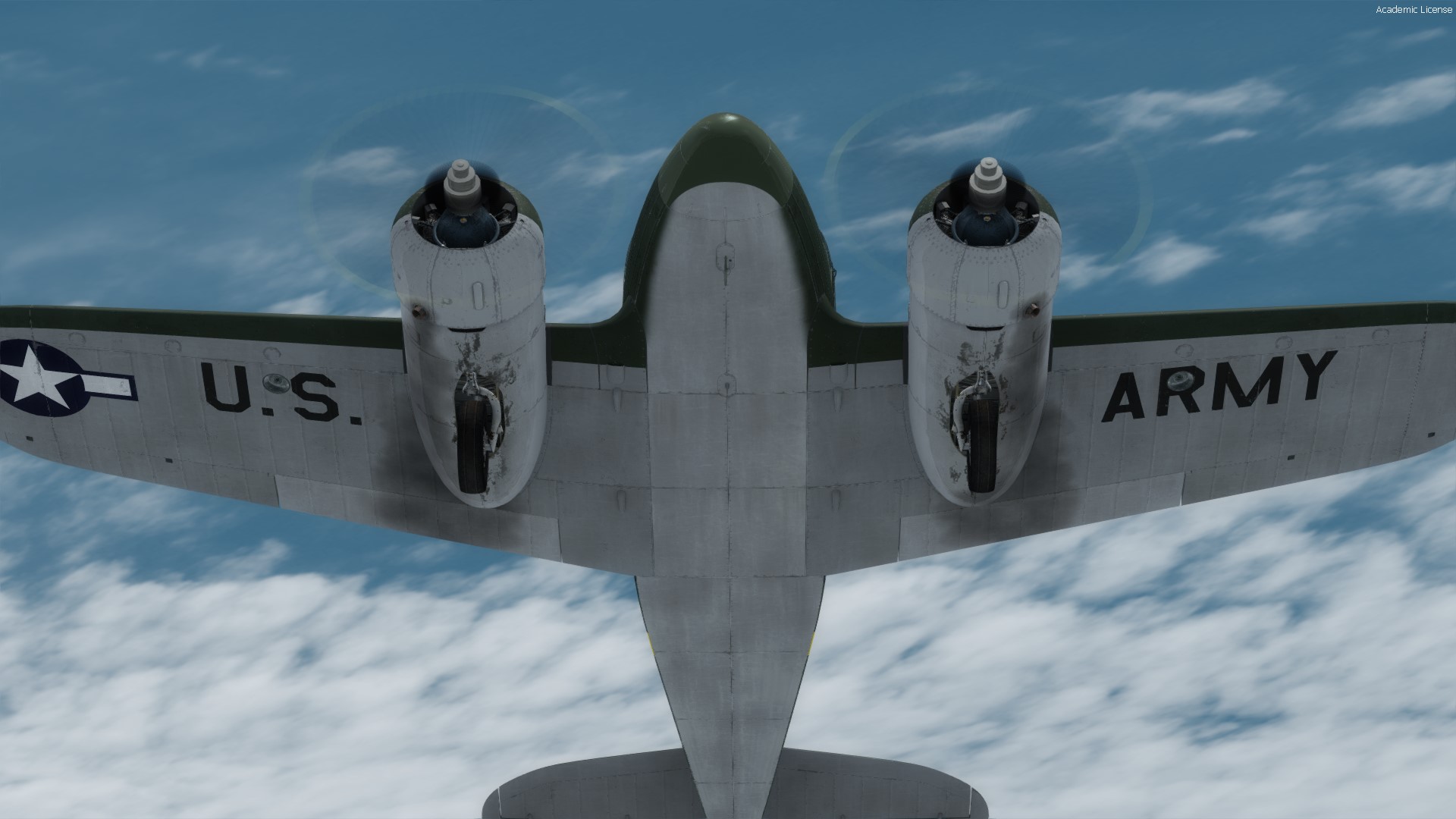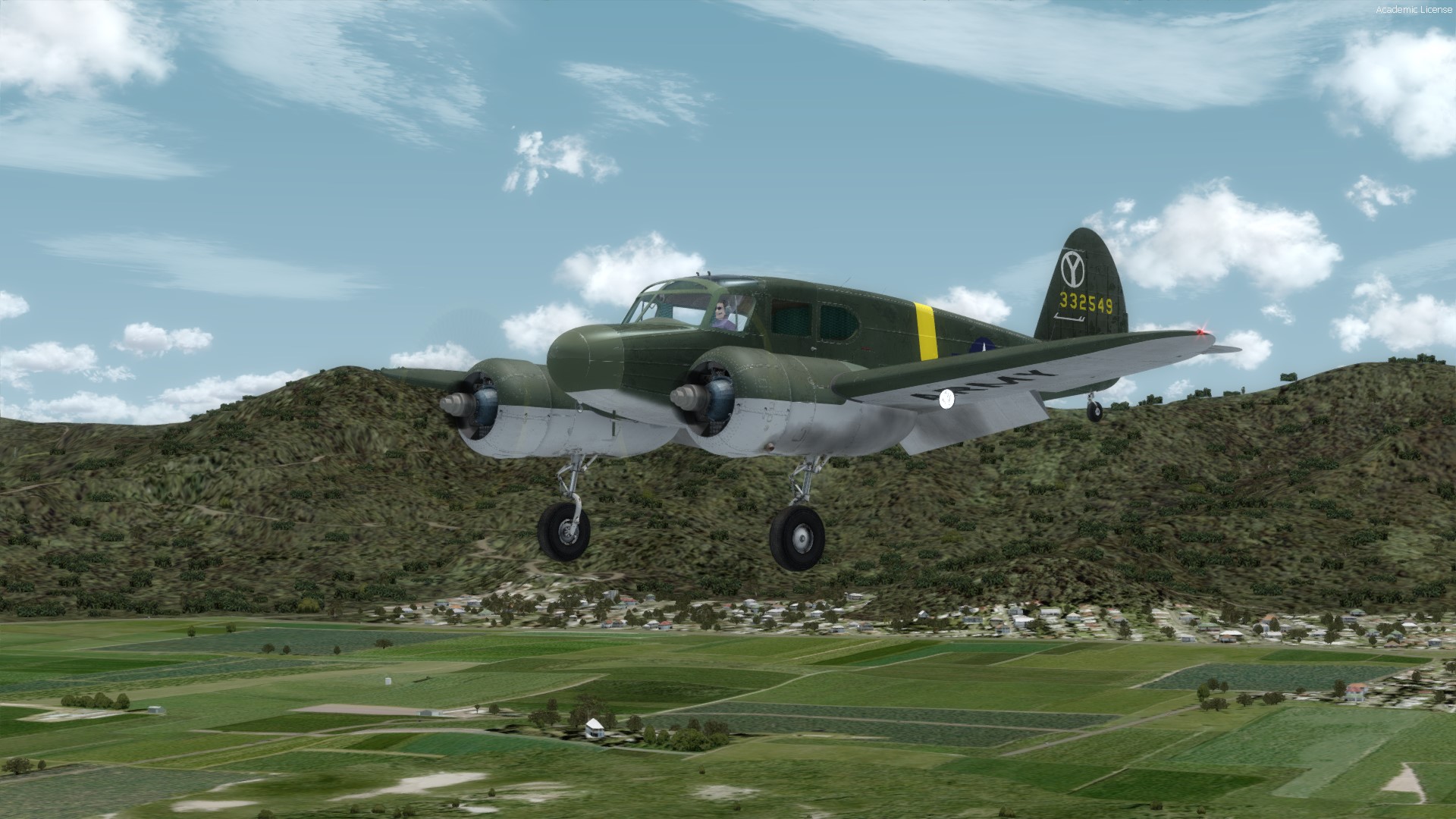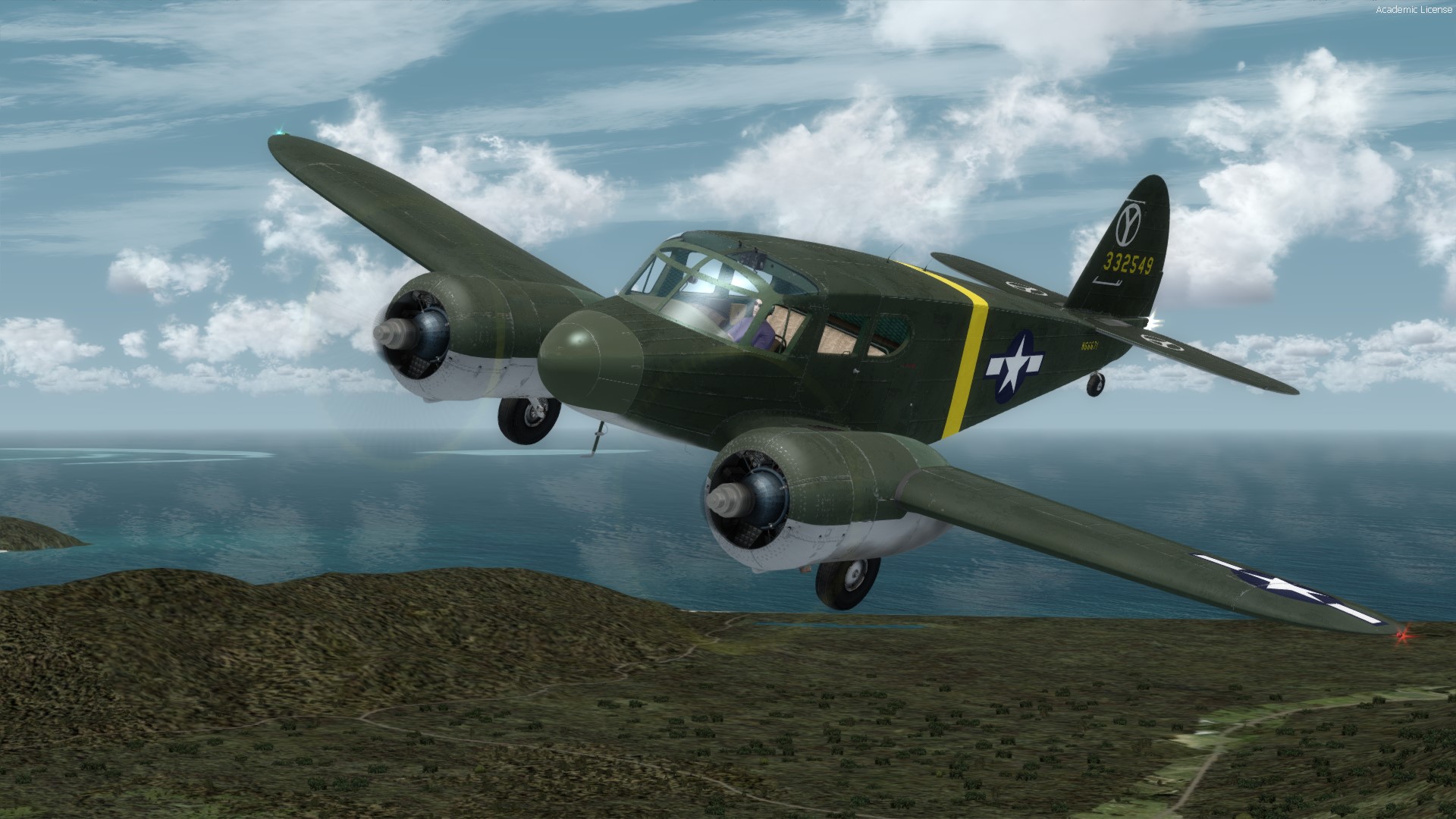Introduction
Cessna needs no introduction in the world of aviation, but you could be forgiven for not recognising the T-50 Bobcat as coming from the iconic manufacturer. Designed as a lightweight, low cost twin engine aircraft for the civilian market, the T-50 Bobcat also found a niche as an advanced trainer in the military during World War II. The T-50 Bobcat went on to be produced in prolific numbers under a wide range of variants and was dubbed the "Bamboo Bomber" by pilots who flew them.
Milviz have established themselves with a reputation for producing aircraft with an incredible level of detail. The Cessna T-50 Bobcat is by no means a complex aircraft by any stretch, but it can still be modelled to the level of detail Milviz are renowned for. An aircraft with a big history this little twin engine gem will appeal to fans of historic aircraft.
History
The Cessna T-50 Bobcat is a small, lightweight, low wing, cantilever monoplane. Powered by two Jacobs L-4MB radial piston engines, the T-50 Bobcat had a wood and tubular steel frame with a fabric covering and featured a retractable main landing gear and wing trailing edge flaps. Originally designed as a lightweight and low cost twin engine transport aircraft for personal use in the civilian market, it later saw extensive service as an advanced trainer in the military to transition pilots from single engine trainers to twin engine combat aircraft. The Cessna T-50 Bobcat's first flight was on 26 March 1939. Production ran from 1939 to 1944 and encompassed the original civilian variant and 19 military and experimental variants with the total production reaching 5,422.
Availability and Installation
The Milviz Cessna T-50 Bobcat is currently available direct from Milviz and Milviz resellers as a download only product (some resellers also offer a master back-up CD / DVD service for a minor additional cost). It is normally priced at US$39.99, or the equivalent on currency cross rates. The download file size is 206MB and it requires 1GB of HDD/SSD space for installation. The installation process is intuitive and seamless and also installs the Milviz Addon Management System (MVAMS) application.
Model Features
The major model features of the Cessna T-50 Bobcat include:
high quality external and internal model;custom 3D gauges;
sophisticated cockpit lighting;
realistic systems and avionics;
realistic start-up and shutdowns;
authentic Radio Range system;
realistic flight dynamics;
selectable avionics fit out;
highly configurable model using the MVAMS application; and
support for 3rd party avionics (Flight1, Mindstar, and RealityXP).
Visual Appearance
General Overview and Exterior. The T-50 Bobcat exudes simplicity in design and construction. The aircraft has a very square fuselage from the cockpit back, tapering sharply to the empennage. The engines are mounted well forward on the wings, giving a very disproportionate appearance to a wing which is very broad. These features give the T-50 Bobcat a very recognisable, and squat appearance overall. The high quality of the external model is stunning, though the texture of the aircraft skin has a shine which makes it appear more like a normal metal skin rather than replicating a fabric covering. It is good, but it just does not quite right. Nonetheless, Milviz have done an excellent job on the external modelling of the T-50 Bobcat and it beautifully captures the simple design and construction of the aircraft.
Flight Instruments, Avionics, and Aircraft Systems. Enter the cockpit of the Cessna T-50 Bobcat with the aircraft set up with no modern avionics and you could be forgiven for thinking this aircraft is prehistoric. If you find radio navigation daunting, then Radio Range navigation will be your worst nightmare, but this is one of the magnificent features of this beautiful aircraft. Never fear though, because with fully configurable avionics fit outs using the MVAMS application, you can equip the T-50 Bobcat with a suite which you are more familiar and comfortable with. Some avionics suite fit outs require third party add-ons, and the available options are: none; Flight1 GTN 650 (Dual); Flight1 GTN 750 (Single); Flight1 GTN 650 and 750 (Combo); Milviz GNS 430/530 (Combo); Mindstar GNS 530; and Reality XP GNS 430/530W XP (Combo). Some of these then have an additional option for the WX Advantage Radar. The cockpit of the T-50 Bobcat, with its array of analogue gauges, takes a degree of familiarisation, but the manuals provide a good description of the panel and gauges. Time spent familiarising yourself with the cockpit environment and reading the manuals will assist you greatly. Now, the T-50 Bobcat does not have complex systems, not by any stretch, but one of the most outstanding features of this aircraft is the authentic engine start procedure. I am not going to go through the procedure ad nauseam, as the manual does this effectively, and there is also an excellent video on the Milviz web site. However, be prepared to set your full tank selectors, pump the Wobble Pump to get the fuel pressure into the green, pump the Primer Pump to get pressure to each engine, and dry crank the engines. Hopefully, if you follow the procedures correctly the two Jacobs radial piston engines should burst and rumble into life. Another excellent feature of the T-50 Bobcat is the ability to navigate using the Radio Range navigation method. If you want a navigation challenge this is the exercise for it. The manual provides a brief outline of the Radio Range method and, again, there is a YouTube video (a link is provided in the manual) which explains the method.
Lighting. A major feature of the T-50 Bobcat is the sophisticated cockpit lighting. In fact, it is so sophisticated, initially, I could not even switch it on. I reinstalled the product multiple times, each time ensuring my anti virus program was disabled, but to no avail, yet all other external lighting functioned correctly. This was frustrating to say the least as it was difficult to even know where to start looking. As it turns out, it appears that toggling the cabin light switch invokes an executable file, Milviz_Lighting_Service.exe, found in the ...\SimObjects\Airplanes\Cessna T-50 Bobcat - Milviz\nightlighting\ folder. Now, even though I had followed the installation process to the letter of the law (and multiple times), when my anti virus program was enabled again, and as part of the active scanning function, it would detect and report a false positive on this file, identifying it as a trojan, and quarantine the file. At the time of publishing this review, I have not been able to successfully "trust" the executable file and have to disable my anti virus program if I want to conduct a night flight with cockpit lighting. I am all for developers pushing boundaries in the pursuit of excellence and quality, and Milviz have a fantastic reputation for this, so I am not criticising the pushing of these boundaries, however, if the result causes problems for the average user (and I class myself an above average user) then I have to question whether the result is worth the potential problems it can cause for the average user. All that aside, the night lighting effect created in the cockpit is very good, even casting shadows caused by the front seats. It illuminates the instruments effectively, albeit producing an unnatural looking stippled finish on parts of the panel. In the rear cabin it provides a warm atmospheric ambience, again with shadows being cast by the seating.
Animations and Sounds. The Cessna T-50 Bobcat includes the typical range of animations you would expect for such an aircraft. There appeared to be a visual issue with the operation of the landing gear in that part of the landing gear struts cut through panels on the forward part of the landing gear wells. Another feature which is common on other aircraft add-ons but not featured on the T-50 Bobcat is the ability to open the cockpit windows. While this is a minor animation in the bigger scheme of things, such animations add to a complete product. On a more positive note, the engine sounds are a very good representation of what you would expect from the Jacobs L4 radial piston engines, producing a lovely rumbling sound at idle, which increases to a deep roar as the throttles are advanced. The engine sounds provide very good stereo separation in both the internal and external views. Again, however, there appeared to be an anomaly in that with the throttles advanced, adjustments to the propeller levers appeared to produce exactly the same changes in engine pitch as did throttle adjustments - this seemed unnatural.
Models and Liveries. The Milviz Cessna T-50 Bobcat is provided in a single model with six individual liveries (a selection showing below). There is an additional blank texture available for aircraft painting enthusiasts. Displaying high quality, the surface textures, reflections, and shadings, give each aircraft a very good appearance, noting my earlier comments regarding the fabric covering. Other scuff marks, scrape effects, dirt, exhaust, oil, and grease stains, add to a reasonably natural representation.
Summary, Issues, and Variations. The rendition of the Milviz Cessna T-50 Bobcat is highly detailed and accurate, the visual quality is excellent, and it provides a faithful representation of the real world aircraft. Most major elements of the cockpit are clear and easy to read, with the typical range of various alternative cockpit camera views to provide more detailed clarity, albeit that some gauges lack clarity unless viewed at high zoom levels. Otherwise, the texture quality was very good. The airspeed indicator in aircraft of this era, and the Pilot Operating Instructions appear to confirm this, were typically calibrated in miles per hour, however, in the T-50 Bobcat it is in knots. Other noted issues with the fuselage skin textures and engine sounds were disappointing and I also found a number of click spots in the cockpit which appeared to have no function. Nonetheless, any other noted visual variations were minor and are considered to be related to real world production variations or a degree of artistic licence on the part of the developer. Any noted issues and variations with cockpit functions and operation were considered minor and / or in the interests of simplifying the function for practical flight simulator use.
The general characteristics and performance specifications for the Cessna T-50 Bobcat are provided in the table. This is based on data from the official Cessna T-50 Bobcat Pilot Operating Handbook, data provided by Milviz, and general research sources. Some of this data varies between sources and also may be an approximation due to variances in data and the specific aircraft modelled by Milviz.
General Characteristics
| Crew | One |
| Passenger Capacity | Three |
| Length | 32 ft 9 in (9.98 m) |
| Wingspan | 41 ft 11 in (12.78 m) |
| Height | 9 ft 11 in (3.02 m) |
| Empty Weight | 3,500 lb (1,588 kg) |
| Fuel Capacity | 150 US gal (568 l) |
| Maximum Take-Off Weight (MTOW) | 5,700 lb (2,585 kg) |
| Power Plant | 2 x Jacobs L-4MB radial piston engine, 245 hp (183 kW) |
Performance Specifications
| Cruise Speed | 152 kts (195 mph, 314 km/h) |
| Stall Speed | 57 kts (66 mph, 106 km/h) full flaps, landing gear down, engine at idle |
| Range | 652 nm (750 mi, 1,207 km) |
| Service Ceiling | 22,000 ft (6,700 m) |
| Rate of Climb | Not Available |
Flight Performance
A specific Test Flight was conducted to test the flight performance of Milviz's Cessna T-50 Bobcat. The flight was conducted in clear weather with a full fuel load and the aircraft at maximum take-off weight (MTOW). The weight and balance section of the aircraft configuration file only has one load station specified and, based on the default figure, it appears to be for the pilot. Whilst a large figure can be added here to bring the aircraft up to MTOW, this is artificial as it also has an affect on the centre of gravity for the aircraft, which makes it even more artificial. Additional passengers can be added using the MVAMS, however, this is only a visual feature when the aircraft is viewed from the external view. A cruise altitude of 5,500 ft was adopted and the route distance was particularly chosen to provide a basis upon which to test the range characteristics of the aircraft.
The aircraft was very easy to taxi. With no flaps set, aircraft rotation occurred at approximately 65 KIAS and gently lifted off the runway, with a climb out which was expected for the aircraft. The Cessna T-50 Bobcat does not leap into the air, but the take-off and climb out are were smooth, and gentle, and there is sufficient power in the twin radial piston engines. No performance data is provided with the documentation so it is all a guess as to what the typical cruise settings are for the aircraft. However, with some typical settings, the aircraft trims out and cruises nicely at approximately 160 KIAS. The Test Flight confirms the modelling of the aircraft for speed performance to be what would reasonably be expected of this aircraft.
Configured for landing, with full flaps, and trimmed for a descent rate of approximately 500 ft/min, the aircraft's approach speed was approximately 80 KIAS and it touched down at approximately 70 KIAS, with a landing roll-out comparable with the specifications for the aircraft.
In testing the accuracy of the instruments, based on the measured Test Flight, the speed indications on the airspeed indicator, were consistent with the averages measured. Additionally, when establishing a set rate of climb on the vertical speed indicator, the respective gain in altitude on the altimeter was achieved within the measured minute, and a standard rate turn was achieved within the measured two minute period using the turn coordinator.
The performance of the Milviz Cessna T-50 Bobcat was what could be reasonably expected of this aircraft. The general handling characteristics are good, with the aircraft being responsive to control inputs. With a lack of detailed performance data, the performance of the aircraft against the specifications and procedures could only be estimated.
Documentation
Three manuals are provided in Adobe Acrobat format (.pdf) for the Milviz Cessna T-50 Bobcat:
Milviz Cessna T-50 Bobcat User Guide;
Cessna T-50 Bobcat Pilot Operating Instructions; and
Milviz MVAMS and Default Cold and Dark User Guide.
The manuals cover the basic, necessary aspects for the operation of the aircraft and the Pilot Operating Instructions is a copy of the real world military technical manual for the AT-17A. As the Radio Range navigation feature of the T-50 Bobcat is promoted, a better description and example of how to use and navigate by this method could have been included. As it is, it is left to the YouTube video. Furthermore, in the T-50 Bobcat User Guide, there is a link relating to a list of Radio Range frequencies which doesn't work.
Value for Money
Whilst the Milviz Cessna T-50 Bobcat has some delightful extra features, the reality is, this is still a simple aircraft add-on. Even though the modelling and textures are excellent, I cannot justify the price of US$39.99 for such an aircraft. Consequently, the Value for Money for the Milviz Cessna T-50 Bobcat is only considered good.
Simulator Performance
The aircraft model performed excellently within the existing settings I have in P3D. I have most of my settings set very high and there was no need to make any adjustments. There was no discernible frame rate impact directly attributable to the Milviz Cessna T-50 Bobcat and P3D continued to perform smoothly.
Technical Requirements
This version of the Milviz Cessna T-50 Bobcat is for FSX / FSX SE / P3D only. Other specified technical requirements are as follows:
Windows 10 / 7 / Vista;
FSX with SP2 installed (or Acceleration Pack), FSX Steam Edition, or Prepar3D (v2 / v3, latest release with all hotfixes); and
2.6GHz CPU, 4GB RAM, 1024MB graphics card (DirectX11 compliant), and 1GB available HDD space.
Review Computer Specifications
The specifications of the computer on which the review was conducted are as follows:
Intel i7 990X Extreme 3.46GHz;
NVidia GTX980 G1 Gaming, 4GB, 1228/1329MHz;
12GB, Kingston DDR3, 2000MHz, XMP T1 CL9 HyperX;
Windows 7, (64bit); and
Lockheed Martin Prepar3D Version 3.4.22.19868.
Additional Major Add-ons.Active Sky 2016, Active Sky Cloud Art, FS Global Ultimate region series, Orbx FTX Global BASE, Orbx FTX Global VECTOR, Orbx FTX Global openLC series, Orbx FTX region series, Orbx FTX airport series, and Orbx FTX Trees HD.
Conclusion
The Milviz Cessna T-50 Bobcat is an aircraft representing the simplicity in the design of the real world aircraft but with a few surprises for the flight simming enthusiast. It is a beautiful aircraft add-on which is a delight to fly, and although there were some noted issues, these where more disappointing than anything else. If you can overlook the rather expensive price, the Milviz Cessna T-50 Bobcat will provide much enjoyment.
Verdict and Scores
Verdict
| The Milviz Cessna T-50 Bobcat is an excellent aircraft add-on product and one which will appeal greatly to flight simmers who enjoy flying aircraft from this great era of aviation. |
Scores
For |
Against |
Category |
Score |
|---|---|---|---|
| High quality textures. | Engine sounds with propeller lever adjustments. | External Model | 9.5 |
| Excellent exterior and interior modelling. | Graphical inconsistencies with landing gear operation. | Internal Model | 10 |
| Multiple avionics configurations. | Documentation is basic. | Sounds | 9.0 |
| Very realistic engine start procedure. | Value for Money is marginal. | Flight Characteristics (does it fly by the numbers) | 9.0 |
| Great flight characteristics. | Flight Dynamics (does it feel like what it looks like) | 10 | |
| Atmospheric cockpit lighting. | Documentation | 8.5 | |
| Value for Money | 8.0 |
Overall Score

The Milviz Cessna T-50 Bobcat is awarded an overall Mutley's Hangar score of 9.1/10,
|


